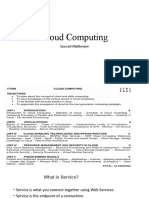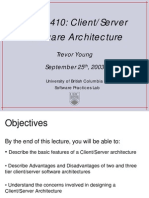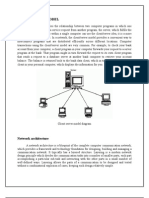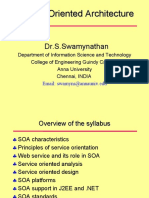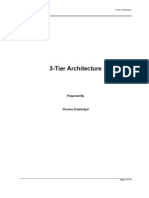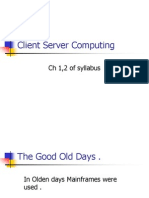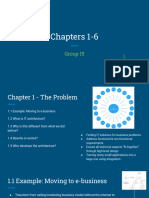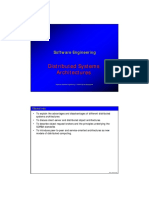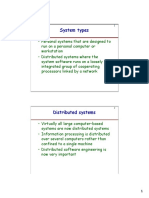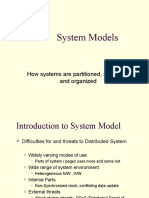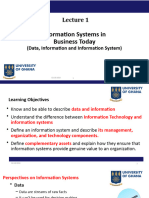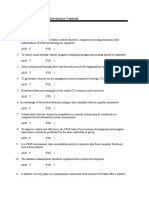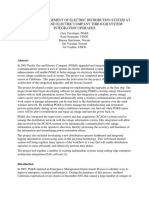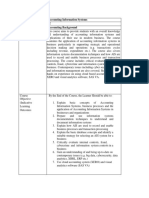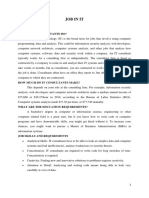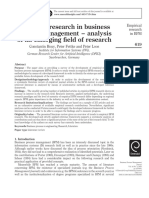0% found this document useful (0 votes)
38 views47 pagesDistributed IS
This document discusses the evolution of distributed information systems and different architectural approaches. It begins by explaining that distributed information systems aimed to solve problems of scaling and integrating diverse resources that earlier monolithic systems could not address. The key architectures described are 1-tier, 2-tier, 3-tier and n-tier systems. 3-tier systems became popular as they introduced a separate middleware layer between client and server applications, improving scalability and integration of different resources. Today, most large-scale distributed systems follow a 3-tier or n-tier architecture to handle complex requirements of integration, scalability and management across networks.
Uploaded by
Mahesh MishraCopyright
© Attribution Non-Commercial (BY-NC)
We take content rights seriously. If you suspect this is your content, claim it here.
Available Formats
Download as PPT, PDF, TXT or read online on Scribd
0% found this document useful (0 votes)
38 views47 pagesDistributed IS
This document discusses the evolution of distributed information systems and different architectural approaches. It begins by explaining that distributed information systems aimed to solve problems of scaling and integrating diverse resources that earlier monolithic systems could not address. The key architectures described are 1-tier, 2-tier, 3-tier and n-tier systems. 3-tier systems became popular as they introduced a separate middleware layer between client and server applications, improving scalability and integration of different resources. Today, most large-scale distributed systems follow a 3-tier or n-tier architecture to handle complex requirements of integration, scalability and management across networks.
Uploaded by
Mahesh MishraCopyright
© Attribution Non-Commercial (BY-NC)
We take content rights seriously. If you suspect this is your content, claim it here.
Available Formats
Download as PPT, PDF, TXT or read online on Scribd
/ 47
